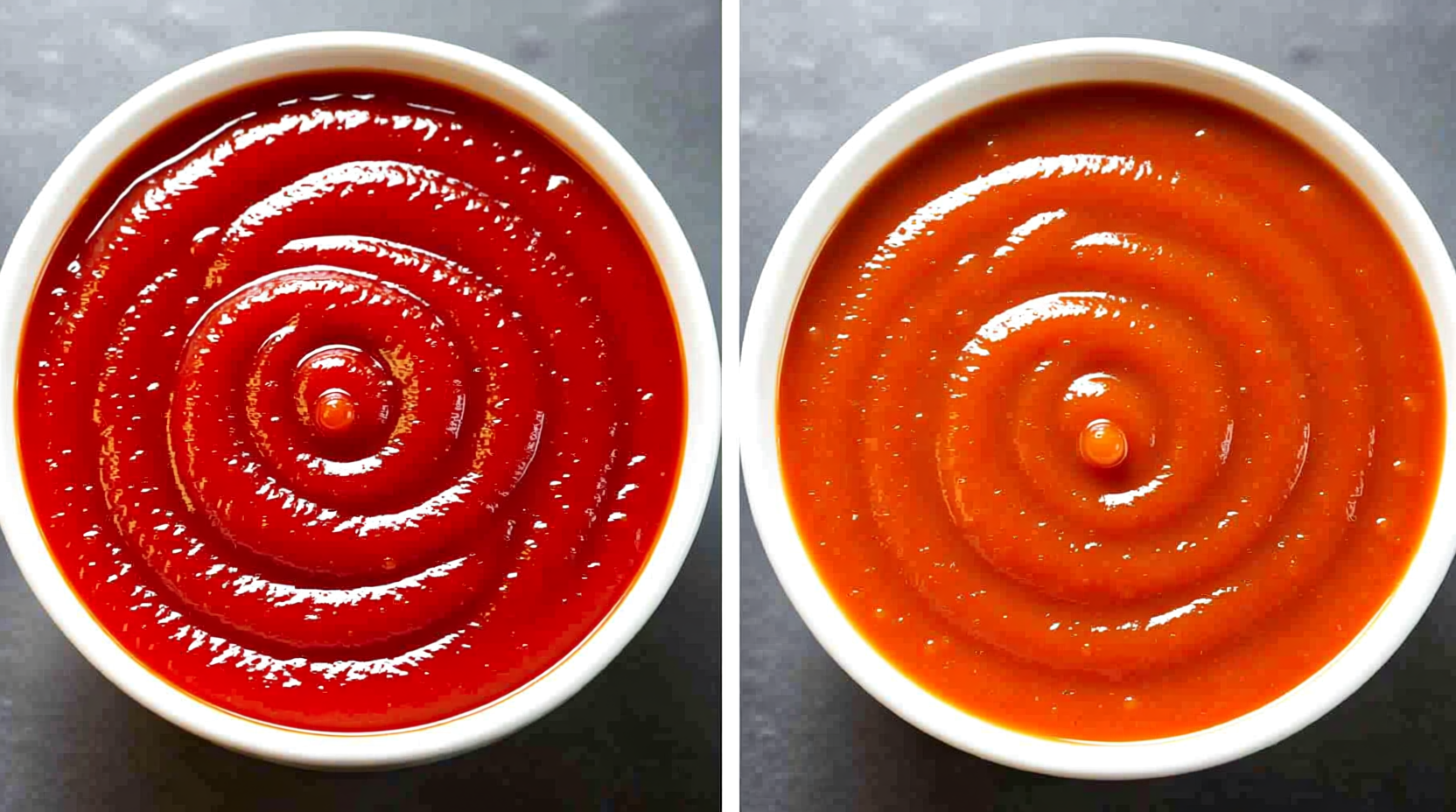Yes, you can substitute tomato paste for sauce, but you'll need to dilute it with water and add seasonings to match the consistency and flavor profile of tomato sauce. The standard ratio is 1 part tomato paste to 1 part water, though this varies by recipe requirements.
Running out of tomato sauce mid-recipe doesn't mean you need to abandon your cooking project. As a professional chef who's worked with countless ingredients across diverse culinary settings, I've found that understanding how to properly substitute tomato paste for sauce can save many dishes. This practical kitchen solution requires more than just adding water—it involves balancing acidity, sweetness, and texture to maintain your recipe's integrity.
Understanding the Core Differences
Before attempting substitution, you need to recognize why these ingredients aren't interchangeable without modification. Tomato paste undergoes extended cooking that concentrates its flavor and removes most moisture, while tomato sauce maintains a thinner consistency with added seasonings.
| Characteristic | Tomato Paste | Tomato Sauce |
|---|---|---|
| Water Content | 24-30% | 93-95% |
| Solids Concentration | 24-28% | 5-7% |
| Processing Method | Double-cooked reduction | Single-cooking with seasonings |
| Flavor Profile | Intensely savory, slightly sweet | Balanced acidity with herb notes |
This composition difference explains why simply using tomato paste straight from the can creates an overly concentrated, sometimes bitter result. The USDA's National Nutrient Database confirms these significant moisture and solids variations between the products.
When Substitution Works Best
Not all recipes tolerate ingredient swaps equally. Understanding tomato paste substitution for sauce in pasta recipes requires evaluating your specific dish:
- Excellent for: Hearty meat sauces, braises, and slow-cooked dishes where additional liquid won't compromise texture
- Workable with adjustments: Pizza sauces, stews, and casseroles when properly diluted and seasoned
- Avoid in: Delicate seafood sauces, fresh tomato-based dressings, or recipes requiring specific viscosity
Professional kitchens frequently use this substitution technique during service rushes. The key lies in understanding that how to replace tomato sauce with paste depends on your recipe's liquid requirements and cooking duration.
Step-by-Step Substitution Guide
Follow this chef-tested method for successful substitution in your home cooking:
- Measure your paste: Start with the amount of sauce your recipe requires
- Dilute properly: Mix 1 part tomato paste with 1 part water for standard substitution
- Enhance flavor: Add 1 teaspoon sugar, 1/4 teaspoon salt, and 1/2 teaspoon dried herbs per cup of mixture
- Simmer gently: Cook for 10-15 minutes to blend flavors and achieve proper consistency
- Adjust as needed: Add more water for thinner sauces or simmer longer to thicken
For substituting tomato paste for sauce in spaghetti recipes, increase the water ratio to 1:1.5 (paste to water) to match the thinner consistency typical of pasta sauces. When making tomato paste substitute for pizza sauce, reduce the water to 1:0.75 and add extra oregano and garlic powder.

Common Mistakes to Avoid
Even experienced home cooks make these critical errors when attempting tomato sauce replacement with paste:
- Skipping the simmer step: Raw diluted paste tastes metallic and one-dimensional
- Incorrect ratios: Using equal parts without adjustment creates overly thick or watery results
- Ignoring acidity balance: Tomato paste requires sugar to counter its intensified acidity
- Over-seasoning: Commercial sauces already contain salt and herbs—adjust carefully
Food science research from the Journal of Food Science shows that proper dilution and simmering significantly improves flavor compound development in substituted tomato products. This explains why the extra cooking time creates noticeably better results.
Practical Recipe Applications
Here's how to successfully implement substituting tomato paste for sauce in specific dishes:
Marinara Sauce Replacement
For every 1 cup of tomato sauce required, combine 1/2 cup tomato paste with 1/2 cup water, 2 minced garlic cloves, 1 tsp dried basil, 1/2 tsp dried oregano, 1 tsp sugar, and 1 tbsp olive oil. Simmer 15 minutes before using.
Lasagna Sauce Adjustment
When making tomato paste substitute for lasagna sauce, use a 1:1 ratio with water but add 1/4 cup tomato puree if available to improve mouthfeel. The longer baking time in lasagna helps develop flavors, so don't over-season initially.
Quick Pizza Sauce Solution
Mix 1/4 cup tomato paste with 2 tbsp water, 1 tsp olive oil, 1/2 tsp dried oregano, 1/4 tsp garlic powder, and a pinch of sugar. This creates the perfect concentrated base that won't make your pizza soggy during baking.
Storage and Shelf Life Considerations
One advantage of using tomato paste as your base is extended shelf life. According to FDA food safety guidelines, opened tomato paste stored in an airtight container lasts 5-7 days in the refrigerator, while homemade tomato sauce maintains quality for only 3-4 days. For longer storage, freeze your diluted mixture in ice cube trays then transfer to freezer bags.
When to Choose Commercial Sauce Instead
While substitution works well in many cases, certain situations warrant using proper tomato sauce:
- When making delicate egg-based sauces like shakshuka
- For cold preparations like gazpacho or fresh bruschetta topping
- When precise acidity levels are critical, such as in canning or preserving
- Recipes specifically designed around commercial sauce's consistent texture
Understanding these limitations of substituting tomato paste for sauce prevents culinary disasters and helps you make informed decisions in the kitchen.
Final Thoughts
Mastering the art of how to substitute tomato paste for sauce gives you valuable flexibility in the kitchen. By following the proper dilution ratios, adding complementary seasonings, and allowing sufficient simmer time, you can successfully adapt your recipes without compromising quality. Remember that cooking is both science and art—these substitutions might require slight adjustments based on your specific ingredients and equipment, but with practice, you'll develop an intuitive sense for perfecting your sauces.











 浙公网安备
33010002000092号
浙公网安备
33010002000092号 浙B2-20120091-4
浙B2-20120091-4